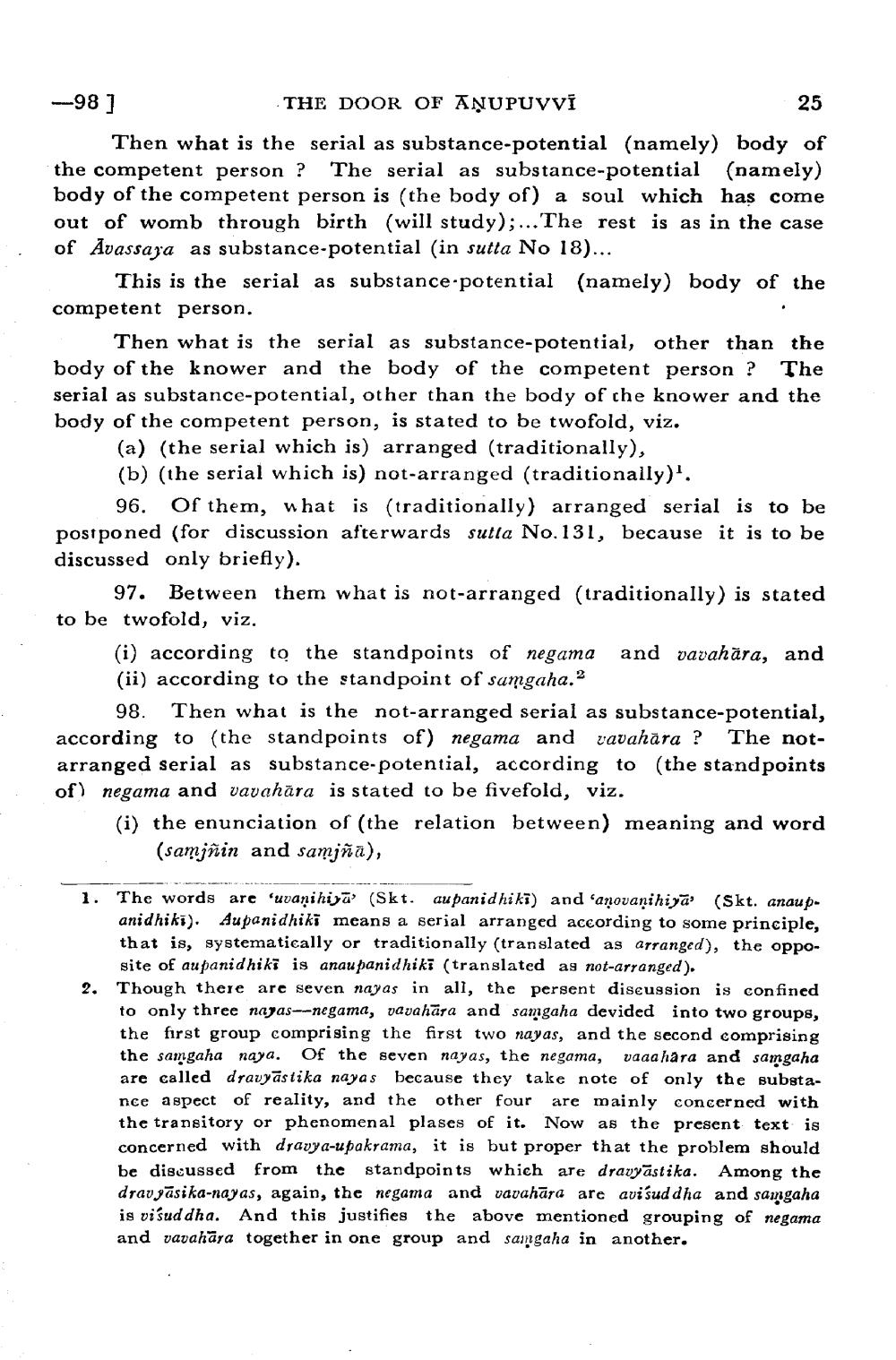________________
25
--98]
THE DOOR OF AŅUPUVVI Then what is the serial as substance-potential (namely) body of the competent person ? The serial as substance-potential (namely) body of the competent person is the body of) a soul which has come
womb through birth will study);...The rest is as in the case of Avassaza as substance-potential (in sutta No 18)...
This is the serial as substance-potential (namely) body of the competent person.
Then what is the serial as substance-potential, other than the body of the knower and the body of the competent person ? The serial as substance-potential, other than the body of che knower and the body of the competent person, is stated to be twofold, viz.
(a) (the serial which is) arranged (traditionally), (b) (the serial which is) not-arranged (traditionally).
96. Of them, what is (traditionally) arranged serial is to be postponed (for discussion afterwards sutla No.131, because it is to be discussed only briefly).
97. Between them what is not-arranged (traditionally) is stated to be twofold, viz.
(i) according to the standpoints of negama and vavahāra, and (ii) according to the standpoint of samgaha.?
98. Then what is the not-arranged serial as substance-potential, according to (the standpoints of) negama and vavahāra ? The notarranged serial as substance-potential, according to the standpoints of) negama and vavahāra is stated to be fivefold, viz.
(i) the enunciation of the relation between) meaning and word
(samjñin and samjña),
(sar
1. The words are 'uvanihiya (Skt. au panidhiki) and 'anovanihiya (Skt. anaup
anidhiki). Aupanidhiki means a serial arranged according to some principle, that is, systematically or traditionally translated as arranged), the opposite of aupanidhiki is anau panidhiki (translated as not-arranged). Though there are seven nayas in all, the persent diseussion is confined to only three nayas--negama, vavahāra and samgaha devided into two groups, the first group comprising the first two nayas, and the second comprising the samgaha naya. Of the seven nayas, the negama, vaaa hara and samgaha are called dravyāstika nayas because they take note of only the substance aspect of reality, and the other four are mainly concerned with the transitory or phenomenal plases of it. Now as the present text is concerned with dravya-upakrama, it is but proper that the problem should be discussed from the standpoints which are dravyāstika. Among the dravyāsika-nayas, again, the negama and vavahāra are avisud dha and samgaha is uisud dha. And this justifies the above mentioned grouping of negama and vavahāra together in one group and samgaha in another.




